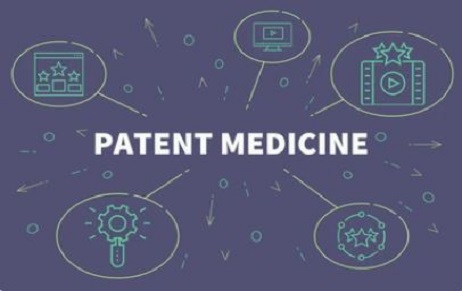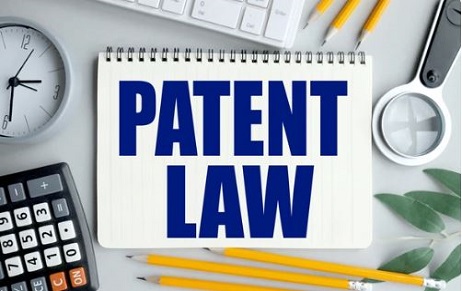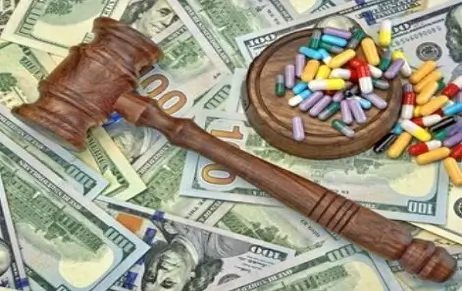INTRODUCTION Whether the Indian pharmaceutical firms are indeed innovating in developing new drugs or just…
Patents in Medicine: Balancing Incentive and Access to Healthcare
Introduction:
The development of drugs and other medical products is very important in this dynamic world. Innovation in the healthcare industry has become a pivotal part of everyone’s lives worldwide. Through the invention of various drugs and other medical products, the world has been able to deal with multitudinous life-changing conditions over time. Intellectual Property plays a significant part in shaping the healthcare sphere by guarding the rights of inventors of medical products, advancing profitable benefits, furnishing impulses in the medical field, and ensuring the availability and affordability of medical products. There are 7 types of Intellectual Property Rights in total. A patent is one of the Intellectual Property Rights granted to inventions. In the medical field, it protects the rights of the inventor and excludes other’s rights of buying, using, and dealing with the medical products invented by the inventors.
Understanding Patents in Medicine:
The patent is a legal instrument that grants the patentee a unique advantage of marketing by banning others from making, using, and selling the invention for a specific period of time, usually for 20 years.[1] In the medical field, a patent includes the invention of new drugs, medical devices, medical software, surgical procedures, and medical treatments. Earlier, a patent in the medical field was opposed by numerous scholars believing that it creates legal walls against the free use of knowledge and hampers experimental progress. It also results in monopoly, high prices, and artificial gains. But a decade later the World War II, the scenario changed and people realized the need for patenting medical inventions. European countries started establishing the frame for patenting medicines one after the other.[2] Today, in this fast-paced world, patenting in healthcare has become largely effective and dynamic. A notable increase has been endured in patent filings by numerous medical industries, pharmacists, biotech enterprises, and medical scholars.
Role of Patents in Incentivising Medical Innovation:
Patent significantly incentivizes medical inventions by bringing market exclusivity, competition, and encouraging further development of new drugs and technology in the healthcare industry. Patents ensure that no one can copy the idea of the patentee by challenging his exclusive right to his Intellectual Property. Clear and reliable patent laws enable the proper allocation of scarce resources, stimulate capital investments, make marketable relations among global stakeholders, and ensure smooth deals. Countries have to develop their healthcare system to stimulate their economic growth and development, patents have a significant impact in erecting an accessible healthcare system and promoting incentives for medical inventions serving as an indicator for profitable growth. Patents grant inventors exclusive rights to their inventions for a specific period, this enables formulators to recoup their R&D investments before the entry of other challengers. However, other competitors cannot copy the patented invention but they can develop new technology in the same space.[3]
Various medical innovations have been patented by the inventors, FARXIGA is an example of a drug patent. FARXIGA is an anti-diabetic drug developed by AstraZeneca. It is used to ameliorate glycemic control in adults with type 2 diabetes. It acts as a monotherapy as well as an add-on treatment.[4] A generic drug-producing company Zydus Cadila filed a patent infringement suit against AstraZeneca’s FARXIGA stating that the patent for FARXIGA is not valid, because it is not a new invention but “merely an obvious variation of old ideas.” But Zydus failed to provide sufficient evidence and hence AstraZeneca won the lawsuit.[5]
Challenges in the Availability and Affordability of Healthcare:
Patients worldwide face accessibility and affordability challenges due to patenting medical innovations. Patients complain that drugs and other healthcare technologies have become precious because the introduction of patents hindered access to cheap medication made by local generic manufacturers. Inventors enjoy a short-term monopoly over their inventions that allows them to set arbitrary prices for their inventions in the absence of challengers. Companies use the strategy of evergreening by making some minute changes to medicines or other medical technologies to extend the patent protection that latterly increases their monopoly period on the medicines and technologies allowing them to raise the prices.[6] Companies justify high prices by stating that an invention requires a large investment to meet the charges of the invention and to prepare for unborn inventions.

Vaccines and drugs for diseases like AIDS, Tuberculosis, and cancer have been patented in numerous countries. This encourages the general public to use traditional and cheap remedies to cure their ails. However, these unhygienic means of curing diseases occasionally beget more dangerous goods on the health of the patients. A lack of clear and precise laws can produce confusion in defining and enforcing patenting rights and lead to lifelong legal controversies between the companies that will affect capital investments, transactions, allocation of resources, and availability of drugs and technology.
A Way Forward for Balanced Incentives and Access to Healthcare:
Inventors can be averted from raising the prices of medicines and life-saving medical technologies by establishing a supervisory body to control the prices. This supervisory body should be authorized by the government to establish a price cap to ensure the affordability of drugs and healthcare technologies. However, while assessing limits on the prices, striking a balance between availability and incentives is pivotal. Low prices can demoralize inventors and affect investment in the healthcare sector hindering the development of the sector and deficit of necessary medication. Government while assessing a limit on pricing should establish an equilibrium between incentive, invention, affordability, and availability. Patent Pool enables numerous companies to come together to make various medicines and medical technologies at low cost ensuring affordability. It is salutary for companies involved as it reduces legal charges and time in the creation of new medicines or technology encouraging collaboration and invention. The government can incentivize invention by funding research in the healthcare sector reducing charges for creating life-saving medicines. Public-private partnerships can goad invention and reduce the cost of creating new drugs making them affordable to the general public and profitable to the companies.
Conclusion:
There is a complex relationship between medical invention and availability essential to goad profitable development. Intellectual Property Rights play an important part in invention in the medical sector by guarding the rights of the inventors. Patenting inventions prevents them from being copied or used without the authorization of the inventor(s), granting them market exclusivity. Patents bring incentives to produce new technologies and medicines to cure deadly diseases. It encourages capital investment and entrepreneurship in the healthcare sector and to accept risks. On the other hand, a patent subventions a temporary monopoly to the inventor resulting in high prices of the essential medicines making them unaffordable to the general public. It is essential to strike a balance between incentive and availability through numerous measures. The government should concentrate on erecting a medium that will cover the rights of the patients by making medicines and technologies affordable and accessible on one hand and guarding the rights of inventors and companies allowing them to enjoy the profitable benefits of their invention and encouraging them to foster developments.
Author: Mahi Jaiswal, , a student at ILS Law College, Pune, in case of any queries please contact/write back to us via email to chhavi@khuranaandkhurana.com or at IIPRD.
[1] ‘Frequently Asked Questions: Patents,’ (WIPO) <https://www.wipo.int/web/patents/faq_patents#:~:text=Patent%20protection%20is%20granted%20for,Patents%20are%20territorial%20rights>
[2] Jean-Paul Gaudilliere, ‘How Pharmaceuticals Became Patentable: The Production and Appropriation of Drugs in the Twentieth Century,’ (Tailor & Francis Online, 7 March 2008)
< https://www.tandfonline.com/doi/full/10.1080/07341510701810906>
[3] Patrick Kilbride, ‘Intellectual Property Rights are a Driver of Innovation in Healthcare Sector’ (ET Healthworld 3 July 2022) <https://health.economictimes.indiatimes.com/news/industry/intellectual-property-rights-are-a-driver-of-innovation-in-the-healthcare-sector/92629667>
[4] Sushmita Panda, ‘Top 10 Blockbuster Drugs That Will Become Off-Patent In 2024’ (The Financial Express, 25 January 2024) <https://www.financialexpress.com/business/healthcare-top-10-blockbuster-drugs-that-will-become-off-patent-in-2024-3375195/>
[5] ‘AstraZeneca Wins a Federal Court Ruling- Upholds Key Patent for Diabetes Drug, Farxiga’ (The RX Advocates, 9 November 2021) <https://therxadvocates.com/blog/astrazeneca-court-ruling/>
[6] Matthew B. Stanbrook, ‘Limiting “Evergreening” For a Better Balance Of Drug Innovation Incentives’ (National Institute of Health, 6 August 2013) < https://www.ncbi.nlm.nih.gov/pmc/articles/PMC3735737/>



